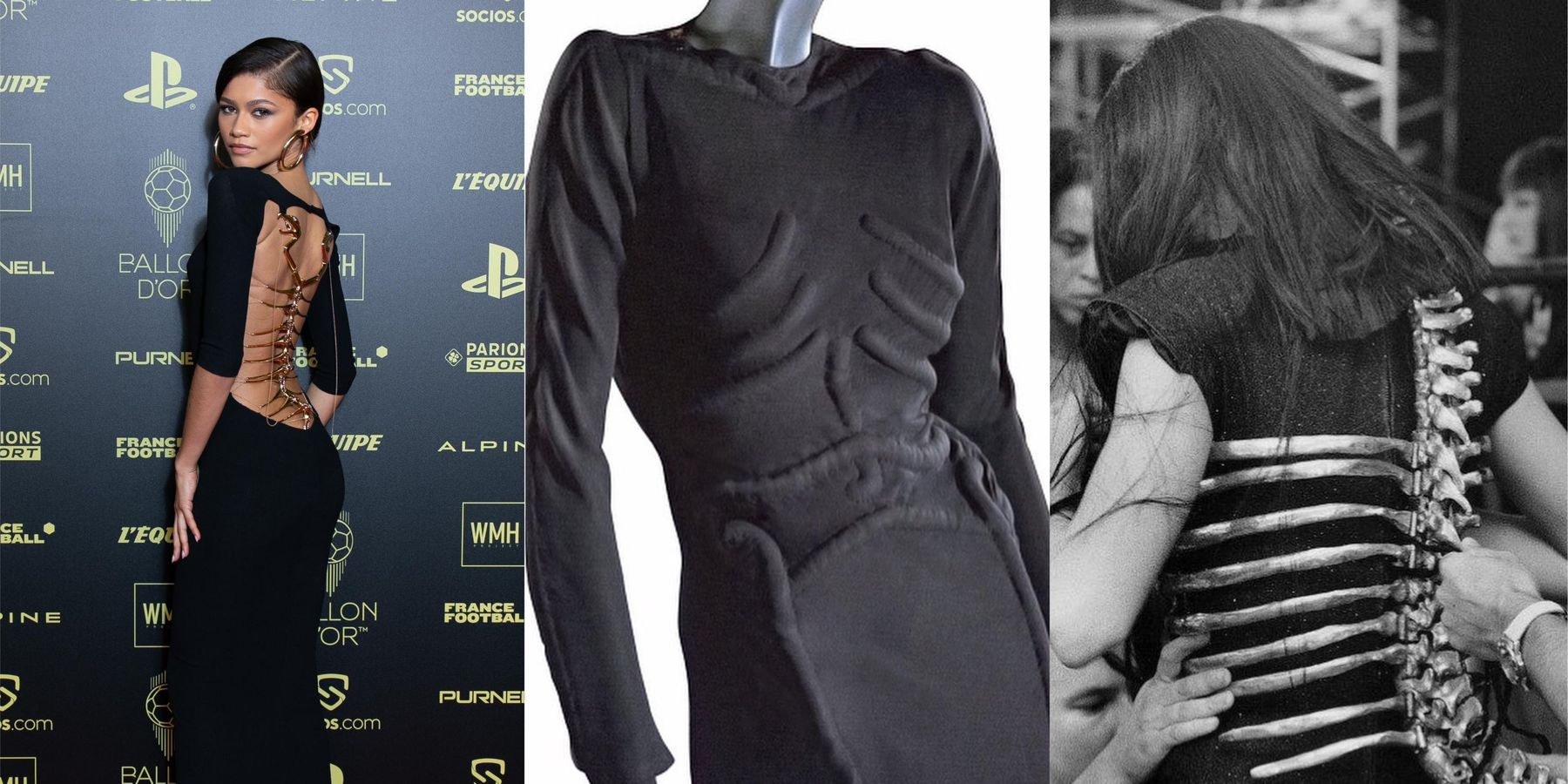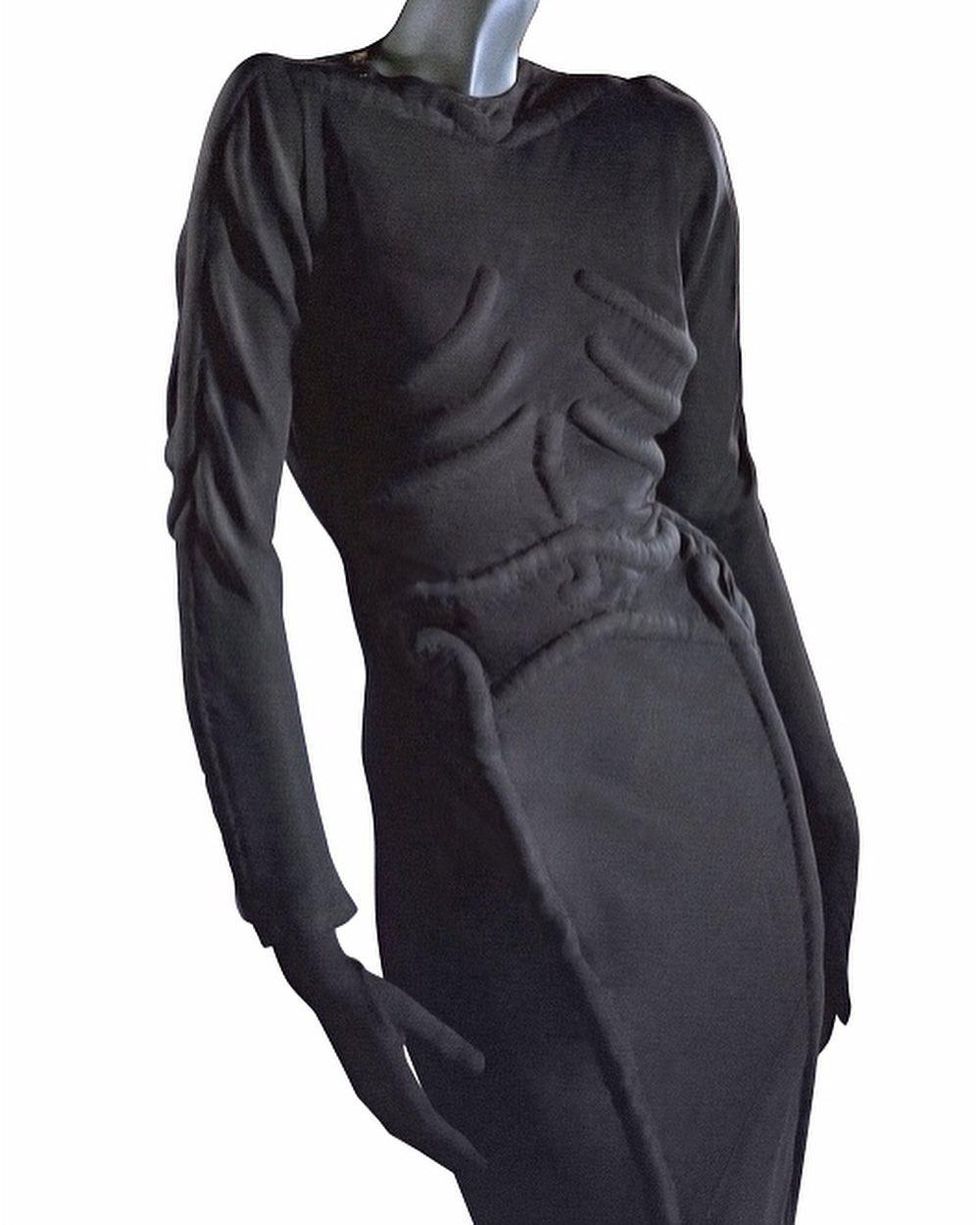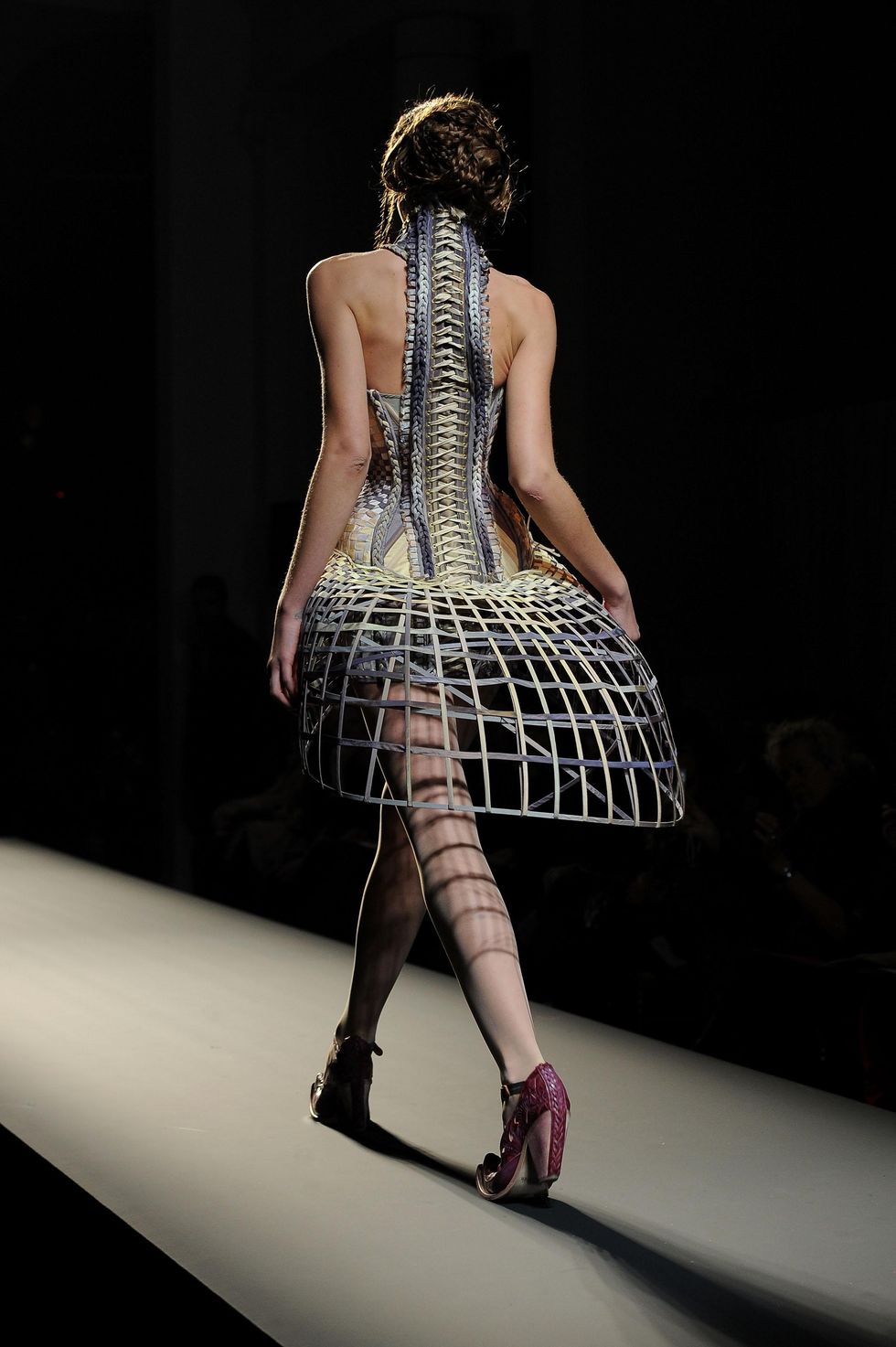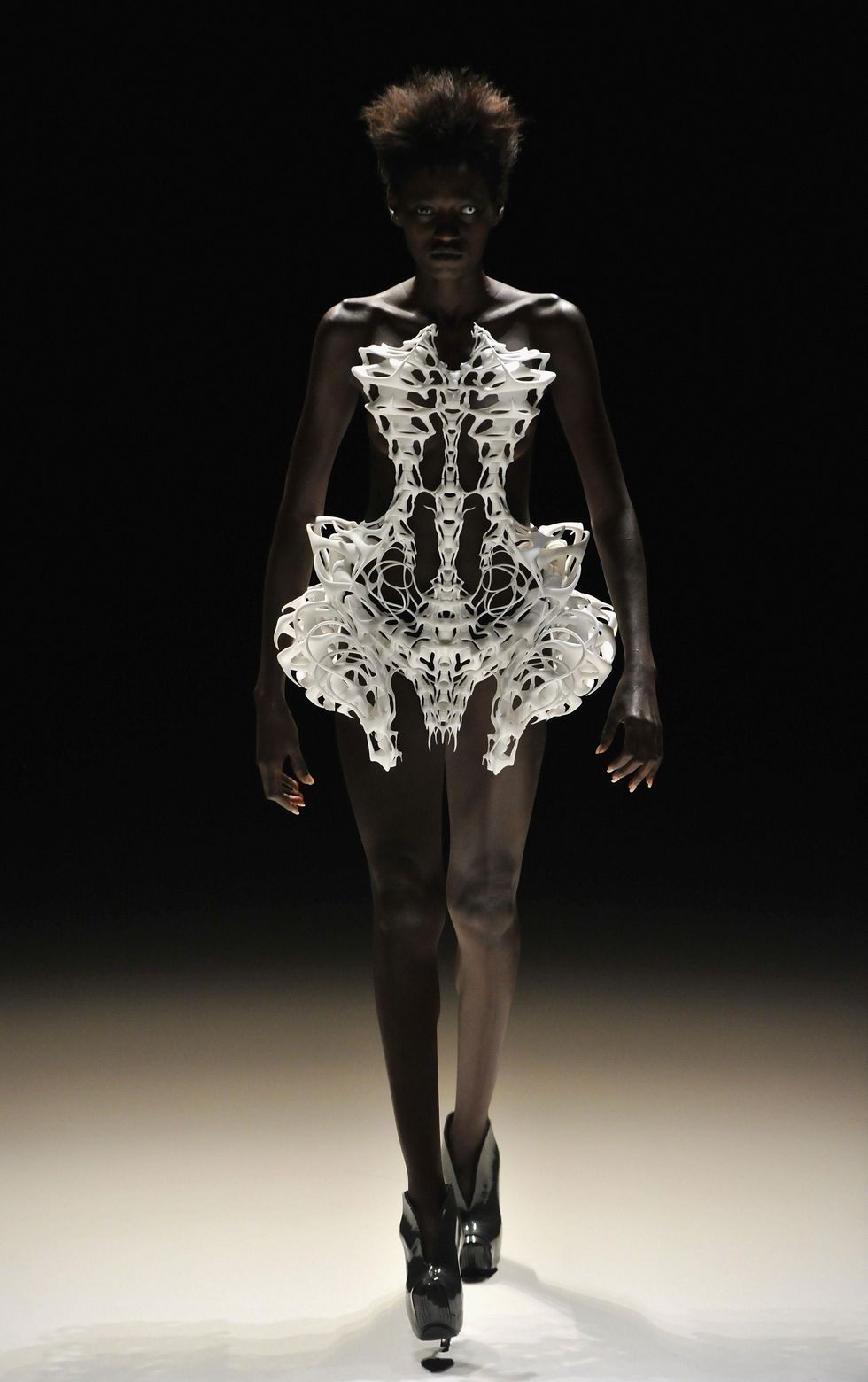
Zendaya and Law Roach never pass up an opportunity to create iconic archival references on the red carpet. On Monday, the “Euphoria” star arrived at the Ballon d’Or ceremony in Paris, alongside her boyfriend Tom Holland. While anything the notoriously private Spiderman couple does has everyone in a frenzy, it was Zendaya’s look that had people talking.
Related | Zendaya Wins CFDA Fashion Icon Award
The newly minted CFDA Fashion Icon Award winner wore a custom re-edit of the Roberto Cavalli spine dress. The original metal spine dress was created by Roberto Cavalli for the Fall 2000 collection. Creative Director Fausto Puglisi worked alongside stylist Roach to recreate the golden scorpion open-back gown.
The Cavalli metal spinal dress is not the first to take inspiration from human bones. Elsa Schiaparelli famously worked together with her close friend and surrealist artist Salvador Dalí to create the iconic “Skeleton Dress” in 1938. The duo made the dress with exaggerated rib cages, spine and leg bones to prominently showcase the human anatomy. Schiaparelli’s dress has been referenced many times including Daniel Roseberry’s Schiaparelli Spring 2020 Haute Couture collection.
Alexander McQueen’s Spring 1998 collection featured the “Spine Corset” made by frequent collaborator and jewelry designer Shaun Leane. Cast from a human skeleton, Leane handcrafted each bone. Leane added a tail after Lee McQueen watched The Omen (1976). The corset references Momento Mori — objects and symbols that memorialize the dead — that McQueen is most notable for weaving throughout his work.

Courtesy of Schiaparelli
For his Spring 2010 Haute Couture collection, Jean Paul Gaultier created a criss-cross weaving back evoking the human spine through lacing similar to sneakers. Gaultier later partnered with La Perla to create a skeleton corset. It was covered in Black Swarovski crystals for his Fall 2011 Haute Couture collection.
And Iris Van Herpen’s groundbreaking usage of technology to mirror nature served as inspiration for her Fall 2011 Haute Couture collection. She collaborated with architect Isaïe Bloch for her debut show to make the dress with 3-D printing company Materialise. The designer was inspired by the algorithmic structural work of Michael Hansmeyer and wanted to create the feeling of the body inside out.

Jean Paul Gaultier Spring 2010 Haute Couture (Photo via Getty)

Iris van Herpen Spring 2011 Haute Couture (Photo via Getty)
MORE ON PAPER
NSFW
Emily in LELO-Land: Your Fave Luxury Toy Brand and Your Fave Fashionista Unite
Story by Zandile Blay